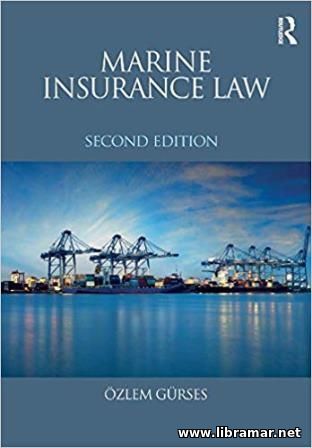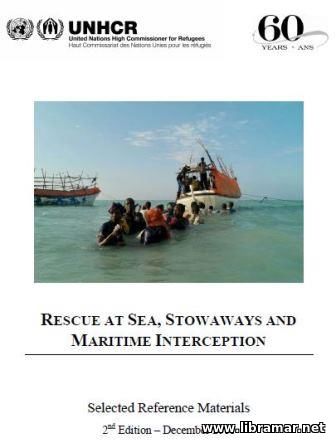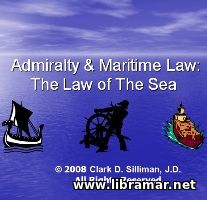 The publication contains the results of thorough examination of the port state jurisdiction concept from the international maritime law point of view. The author of the volume have particularly focused on the situations where the port states used their jurisdiction to apply the unilateral domestic law to the foreign-flagged ships.
In order to illustrate these situations together with the legal issues involved, the author has performed the detailed analysis of three pieces of legislation, one being from United States, another from European Union and the last one from Australia. The key issues included the legality of the attempts done by the port states to regulate the important aspects of the ship's structure/equipment on board and some of the activities normally taking place prior to a ship's arrival in port.
Since the international law of today presents not too many restrictions on the port state actions, the developments in the field might have quite serious impact on the future of the maritime legislation in the international context. A recommended reading for the people with the interest in the international maritime regulation and practicing maritime lawyers, in the first turn.
 This is actually the very first publication to address modern seaports from the legal point of view. The author has provided a comprehensive and professional overview of the seaports of today’s world. He will give readers an essential instrument to be applied for when establishing the legal basis of the sea ports. The document opens with the information about the sea ports in general; the author addresses the problem of lack of interest for them in the modern international law.
The main body of the publication deals with such important topics as the pre-industrial and industrial ports, the port of globalization, the Colonial factories, Paolo Sarpi’s doctrine and Geneva Convention of 1923, as well as the Mar del Plata and the Montego Bay Conventions…
In short, this is an excellent compilation of the information that would be required for everyone dealing with the law aspects of the seaports since it will let them stay updated. The remarkable coverage of the publication has gained it the worldwide popularity. Note that all recent developments in the industry have been duly addressed in the publication. The seaports have been dealt with in detail together with all legal aspects.
 The author of the present volume focused mainly on the features specific to the Baltic Sea, paying due attention to its uniqueness in the legal terms. There are up to six regulation levels acting in parallel, including the national laws and general international law, European Union law, different municipal and local regulations, as well as the many other arrangements.
It shall be noted, however, that having so many laws, rules, and regulations does not guarantee the effectiveness. The content of this document covers several topics considered internationally important; however, it was found that in these particular areas there are certain gaps in the regulatory framework. Apart from the legal analysis of the serious aspects specific to the region, the volume also addresses the regulatory anatomy, providing the detailed explanations.
You will get to know how exactly the gaps in the regulatory set are normally formed, and how they shall be filled. The author explains the interaction of the different regulatory layers. The book will be of practical use for the people engaged in the ship operation in the Baltic Sea area, providing all necessary information hard to find in any other sources.
 This second edition of the popular marine insurance law publication was prepared and released with the aim to introduce and clearly explain all important matters that are normally covered within the courses for masters; the students and people new to the area will be offered a remarkably accessible and comprehensive overview of this part of the maritime law.
The publication opens with the brief but informative introduction to the essential principles of the maritime law as well as formation and structure of the maritime shipping insurance contracts. Then, the author proceeds to the individual considerations, giving their detailed explanation. Among the topics covered there are insurable interest, fraudulent claims, fair presentation of the associated risks, reinsurance, marine perils and many other aspects.
The content of this edition is revised to reflect the significant changes that were presented within the Insurance Act 2015; in addition, there are several newly introduced appendices that contain information about the applicable regulations and give some example clauses that have been taken from the real maritime insurance contract and included for reference.
 In this fourth edition of the publication its authors keep providing people engaged in handling the shipping related disputed in different jurisdictions with a professional overview of the most important issues that are related to each of the jurisdictions. The content of the book has been developed on the basis of the valuable contributions from the major flag state authorities and leading shipping companies.
There are several completely new chapters included in the book; they cover the law of the main centers of shipbuilding. The book opens with the cross-jurisdictional chapters where the authors look into the recent developments in the most critical areas of the maritime industry. Subject areas would typical include shipbuilding and operations, maritime piracy, maritime ports, major environmental issues, logistics, regulations and many others.
The marine insurance has been paid particular attention. Note that there is also a new chapter addressing the offshore industry – here the authors are making an effort to demystify the complicated contractual relationship in the offshore sector. The review of the safety regimes in different countries has been provided, together with the port state control, classification and registration…
 The present publication presents the selected reference materials relating to the problems of rescue at sea. As the title implies, the content of the document also covers such important aspects as marine interception and stowaways. In short, it is the collection of the regulatory documentation addressing the above-mentioned matters.
The first part of the book is dealing with the international law of the sea, and here the readers will find the international instruments including UNCLOS and International Convention on Salvage, SOLAS, SAR and FAL, plus the Convention on the High Seas. Moreover, this part also contains the relevant IMO Guidelines.
The second part will be valuable for those interested in the international refugee law - they will find all important conventions, interventions, guidelines and position papers issued to cover this problem; several key conference and meeting materials released by UNHCR have also been included.
Three remaining parts of the book are dealing with the international criminal law, humanitarian law and human rights. A definitely useful publication for those with the professional interest in the maritime industry and shipping law with the focus made on rescue at sea and associated issues.
 This is a very good and useful training resource to be used by the students of maritime law. The content has been presented in the way of powerpoint presentation covering all important aspects and giving detailed introduction to the Admiralty and maritime law regulating the transportation of people and goods by sea. The origins of the Admiralty and maritime law trace back to the ancient times.
The maritime courts were originally established in the marine ports with the intention to resolve serious controversies existing among different nations engaged in the process of transporting passengers and cargoes over water. This training volume starts with the brief history of maritime law followed by the information on the development of American Admiralty Law. Then, the author proceeds to the main terms including vessel, navigable waters and maritime flavor.
Separate slides have been devoted to the jurisdiction over worker injury and jurisdiction over maritime torts. Contracts for the cargo transportation, chapter parties, demise chapter, time charter, voyage charters and bills of lading are covered within next several slides. In short, the document will provide trainees with all necessary information about the Admiralty and maritime law and as such shall be saved by all persons with the interest in this field.
 Here is the latest, fourth, edition of the volume providing traditionally detailed and remarkably practical guidelines on the real-life working principles of the LMA, standing for the London Maritime Arbitration. We would like to underline that the present publication is the only one available on the market to offer such practical focus on the modern maritime disputes; it also provides all interested parties with the perfect exposition of the fundamental principles and basics of the English law together with the informative discussions and thorough analysis of the applicable case law and regulatory framework.
The content of this brilliant volume will be highly appreciated by the arbitration practitioners who will definitely be pleased to find all required information in a single volume; they can use this book both in-house and in their private practice. The book was also aimed at the professionals of the maritime shipping industry including ship owners and charterers, ship managers and brokers, P&I workers and so many others. A new section has been included in this release of the book covering the Brexit, salvage arbitration and third-party funding. Comparative references and summaries are provided for easy use.
|







